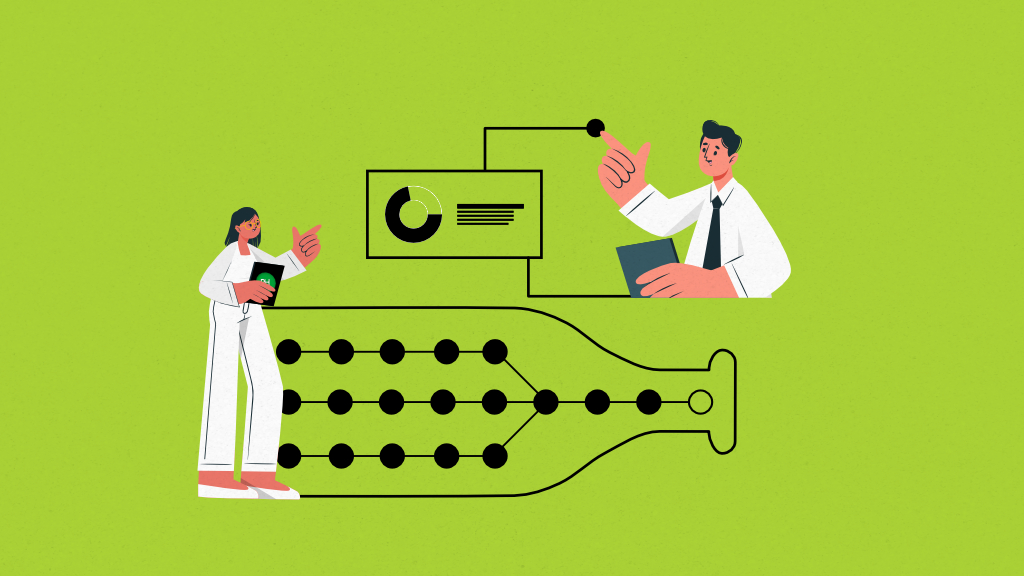Ever wondered why your projects suffer and timelines keep slipping despite tasks being assigned, deadlines set, and roles defined? While factors like poor planning and complexity play a role, one often overlooked culprit is bottlenecks.
The term “bottleneck” comes from how the narrow neck of a bottle slows the liquid flow as you pour. In project management, it refers to a specific phase, resource, or process that restricts a project’s efficiency, affects timelines, and ultimately puts the success of the project at risk. Identifying and addressing these bottlenecks early is crucial to keeping projects on track and ensuring timely delivery.
You might think, “But I planned everything perfectly– there is no way bottlenecks exist in my project.” Think again. Even the best-planned projects encounter bottlenecks due to overloaded team members, inefficient processes, lack of resources, or poor communication.
You may now have questions about bottlenecks, how to identify them, and their solutions. We have compiled this article to inform you about project bottlenecks, ensuring that your projects stay on schedule and your team remains productive.
What is a bottleneck in project management?
A bottleneck in project management is a point in the workflow where progress slows down or gets blocked due to limited resources, inefficiencies, or dependencies. It can occur at any project stage and often leads to missed deadlines, decreased productivity, and increased costs.
Types of bottlenecks in project management
There are two types of bottlenecks, i.e., performer-based and system-based bottlenecks. Let’s see them in detail.
1. Performer-based bottleneck
When a team or an individual struggles to meet expectations, it doesn’t necessarily indicate they are underperforming. Often, the issue arises due to excessive workload, unclear priorities, or skill gaps that prevent them from completing tasks efficiently.
An example: Consider a marketing team assigned to launching a new product. All promotional materials- such as social media graphics, ad banners, and email visuals, are handled by a single graphic designer. Even though the designer is talented, the sheer volume of work slows down the entire campaign. The real issue here isn’t the designer’s performance, it is the lack of additional design resources.
2. System-based bottlenecks
Slow and outdated project management software is the cause of system-based bottlenecks. When teams rely on inefficient tools, it leads to delays in communication and task execution.
An example: Take a software development team using an outdated project management tool that frequently crashes and lacks real-time collaboration features. As a result, team members waste time waiting for updates, manually tracking tasks, or dealing with lost data. In this case, outdated software is the bottleneck, not the team’s efficiency.
Impact of bottlenecks on project outcomes
Don’t make the mistake of assuming bottlenecks are minor roadblocks. They can have ripple effects that impact the entire project. When left unaddressed, they can lead to:
- Reduced efficiency: A bottleneck restricts the natural flow of work, creating a backlog of tasks that only keeps growing. Instead of completing tasks smoothly, team members often find themselves waiting for approvals, resources, or decisions.
For example, if a design team has to wait days for feedback before they can proceed with revision, they end up wasting a lot of valuable time, lowering overall productivity and causing frustration.
- Missed deadlines: Bottlenecks can lead to missed deadlines as tasks get delayed, affecting the project timeline. When one stage of the workflow slows down, every dependent task gets pushed back, making it difficult to meet project milestones.
For instance, if a development team is waiting for finalized designs from the creative team, their coding phase is delayed, ultimately postponing the product launch.
Never miss your project deadlines again! Stay ahead with ProofHub and enhance your team’s efficiency. Sign up now for a 14-day free trial!
- Diminished team morale: Bottlenecks can easily break your team’s confidence, leading to frustration and disengagement. When team members feel overwhelmed by delays and obstacles, it can result in decreased productivity and a lack of enthusiasm for their work.
- Dissatisfied stakeholders: Project stakeholders expect timely updates and results. Bottlenecks lead to delays, missed expectations, or last-minute rush that compromise quality. Stakeholders’ trust takes a hit, leading to dissatisfaction.
- Decreased revenue: Project delays increase labor costs, resource wastage, and potential penalties for late project delivery. Moreover, prolonged bottlenecks can strain client relationships, leading to contract cancellations.
Signs of bottlenecks in project management
Identifying bottlenecks in project management is crucial for maintaining efficiency and meeting deadlines. These warning signs indicate workflow disruptions that can slow the progress of a project.
Here are common signs to identify bottlenecks:
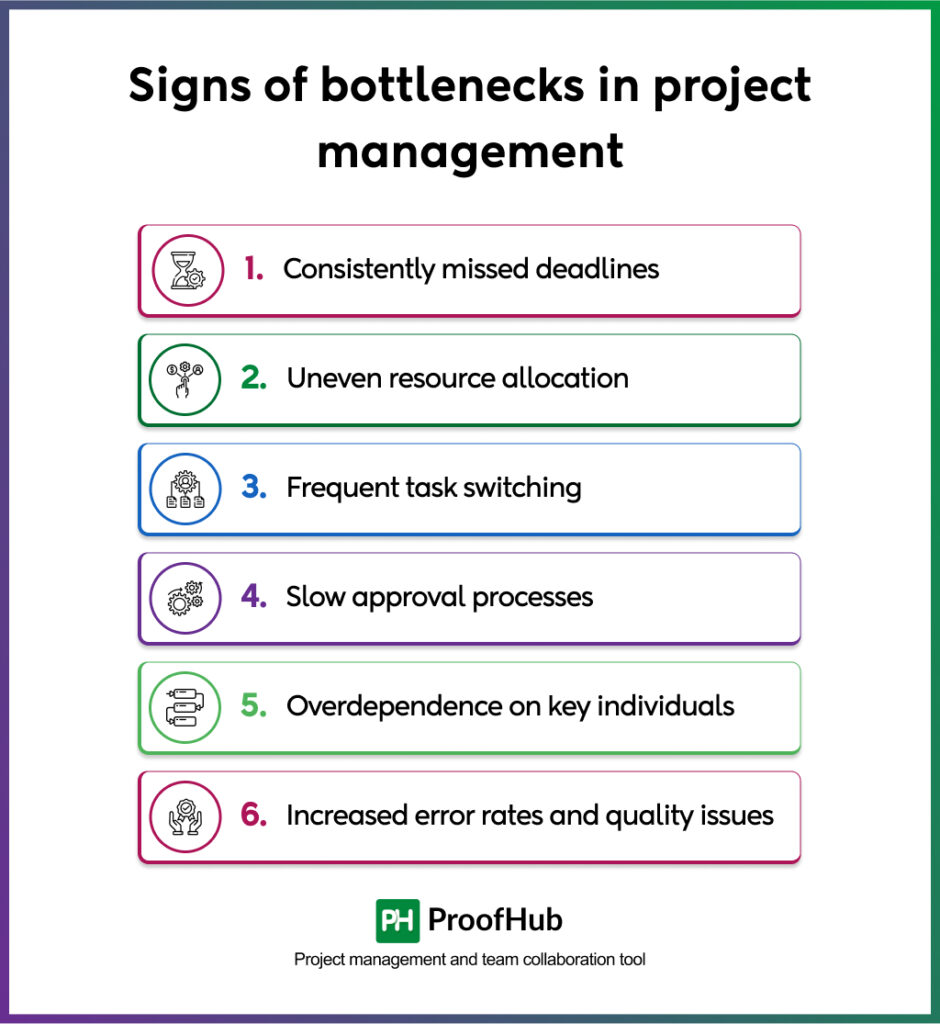
1. Consistently missed deadlines
One of the most evident signs of a bottleneck within an organization is the consistent inability to meet project deadlines. If deadlines are repeatedly missed, some parts of the workflow are inefficient.
2. Uneven resource allocation
Bottlenecks often appear when a small group of team members is stressed out with work compared to a relative of others who are under-occupied. When some people have to do all the valuable tasks, they also become bottlenecks. Employees who are stressed out tend to become less productive and more mistake-prone.
Discover more about resource allocation in our comprehensive guide.
3. Frequent task switching
An emerging sign of a bottleneck is the persistence of task handover due to task overloading or a mismatch in knowledge. If work has to keep getting handed over to different people, it is a sign that some departments or specific team members cannot perform at the required level. This handover of tasks disrupts the smooth functioning of the organization, leading to miscommunication and mistakes.
Learn how to prioritize tasks and maximize productivity at work.
4. Slow approval processes
Your workflow can suffer bottlenecks if approvals and decision-making processes extend beyond the anticipated timeframe. Sometimes, projects require review or feedback from senior management. If approvals are delayed, project delivery may be affected. This becomes problematic when multiple tasks are blocked pending a single authorization before they can proceed.
5. Overdependence on key individuals
A significant bottleneck occurs when a project depends too heavily on one person for essential decisions or duties. If there is just one person with the knowledge or power to run the project, it stalls whenever they are unavailable.
6. Increased error rates and quality issues
A decline in work quality often signals an underlying workflow bottleneck. Errors and rework increase when teams are under pressure to meet deadlines or are overburdened by task backlogs. These quality issues not only slow down progress but also drive up project costs. Locating and resolving bottlenecks early on can maintain quality standards and ensure efficient project execution.
Examples of bottlenecks in project management
Have a look at some examples to understand the bottlenecks in project management.
Example 1: Software team developing a project management application
A software team is developing a project management application. Despite their hard work, progress is slower than expected due to multiple bottlenecks.
The first bottleneck occurs during the code review process. After developers complete their coding tasks, they must wait for a senior developer to review their work. However, the senior developer is overloaded with multiple responsibilities, causing delays in the review process. As a result, the QA team received the application later than planned, delaying overall project timelines.
- To address this bottleneck, managers could explore solutions such as distributing review responsibilities among multiple senior developers
- Implementing automated code review tools
- Setting up dedicated review time slots to ensure a smoother workflow
Example 2: Marketing team running a large campaign
A marketing team is preparing for a significant campaign to generate leads, but misalignment and communication gaps between departments hinder progress. The content team develops promotional emails and landing page copy while the design team works on graphics. However, due to a lack of clear coordination, the messaging and branding of these assets are inconsistent.
The problem worsens when the stakeholders request modifications to messaging and branding. This results in inconsistent outreach, leading to missed opportunities to convert attendees into potential customers.
To resolve this,
- The team could implement a centralized project management system
- Hold regular sync meetings
- Establish transparent workflows for approvals and communication
How to identify bottlenecks in project management and their solutions
Early detection of these bottlenecks and ensuring effective solutions can significantly improve the workflow and productivity of your team.
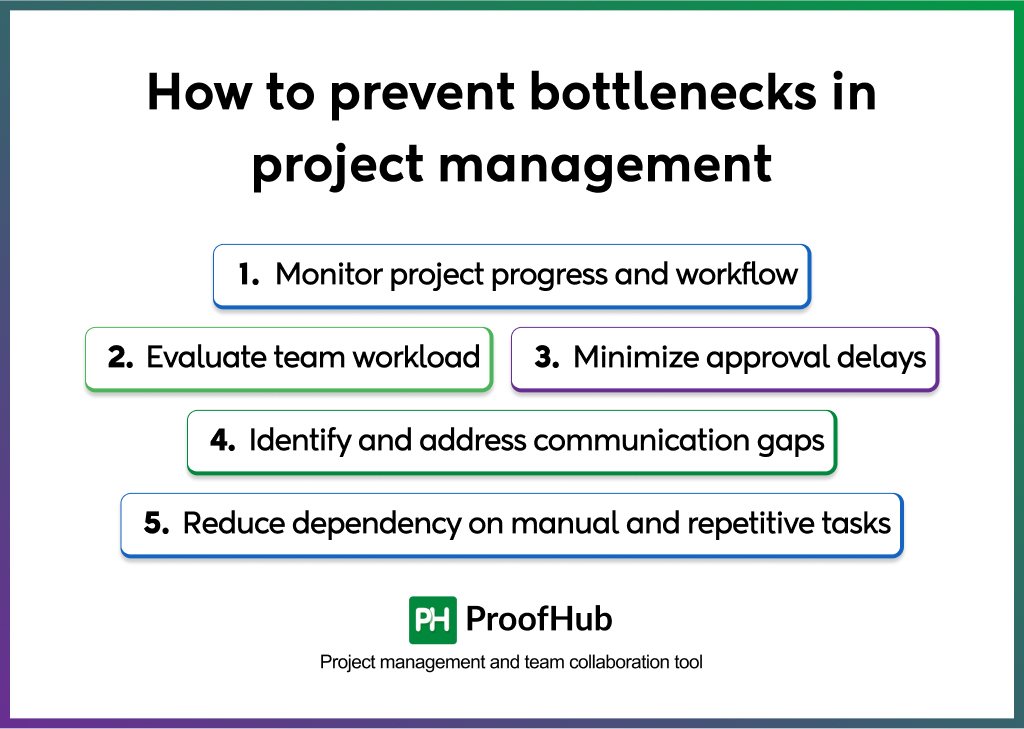
Here are the ways of finding bottlenecks in project management and how to solve them.
1. Monitor project progress and workflow
Look for tasks that consistently take longer than expected or frequently cause delays in other areas. A bottleneck may be present if work piles up at a particular stage while other parts of the process move smoothly.
How to identify:
- Use Gantt charts or Kanban boards to visualize workflows.
- Identify tasks that have long waiting times before execution.
- Look for areas where tasks frequently get stuck.
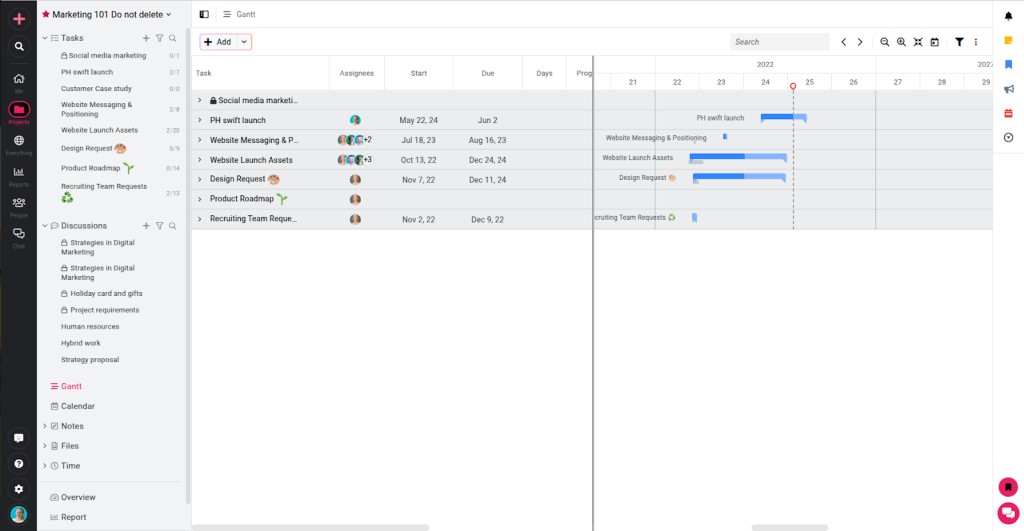
Proper workload distribution is essential because it prevents bottlenecks from occurring in project management. A balanced workload minimizes overburdening individuals, reduces stress, and enhances overall productivity.
Solutions:
- Process automation helps reduce manual effort.
- Divide complex tasks more efficiently.
- Use Standard Operating Procedures (SOPs) to maintain uniformity in operations.
2. Evaluate team workload
When some team members are always overworked while others are underutilized, bottlenecks are bound to develop. This non-steady state causes delays in project timelines, low team morale, and low productivity overall.
How to identify:
- Determine which team members consistently receive more work than the others
- Verify whether dependence on a single individual is the source of delays
Solutions:
- Use workload management tools to ensure an even distribution of work among team members.
- Assign work according to experience, availability, and skill levels to avoid overworking any one person.
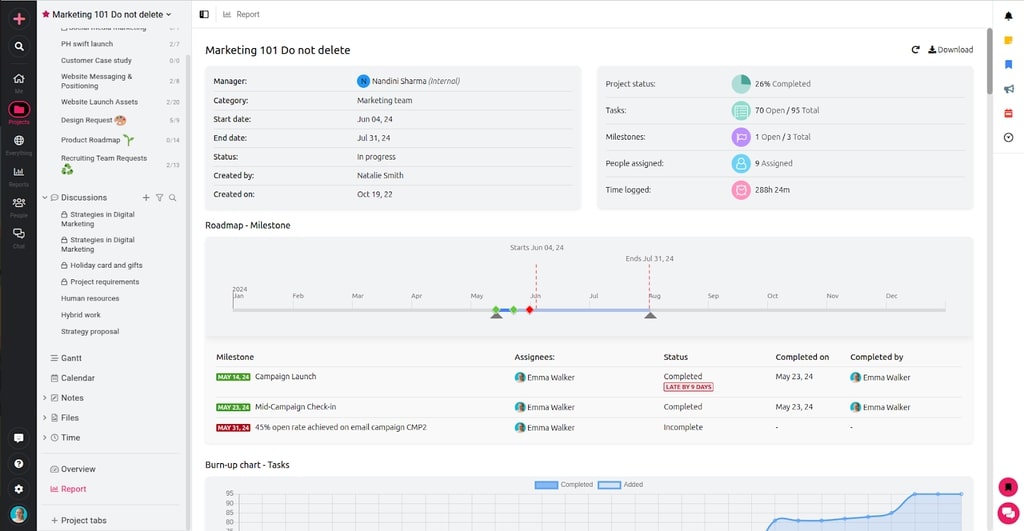
3. Minimize approval delays
Approval delays are a clear sign of a bottleneck in project management. They occur when decisions or approvals are delayed, halting progress and creating a backlog of tasks. Ineffective workflow and inadequate communication are frequent causes of this kind of bottleneck.
How to identify:
- Track where tasks are frequently stalled due to pending approvals.
- Analyze the time taken for decision-making across different project stages.
Projects remain on schedule when the approval workflow is streamlined to remove unnecessary delays. Moreover, faster decision-making reduces bottlenecks, allowing teams to maintain momentum and meet deadlines efficiently.
Solutions:
- Establish clear approval hierarchies to avoid confusion.
- Set deadlines for decision-making.
- Use automation to streamline approval workflows (e.g., automated reminders, digital signatures).
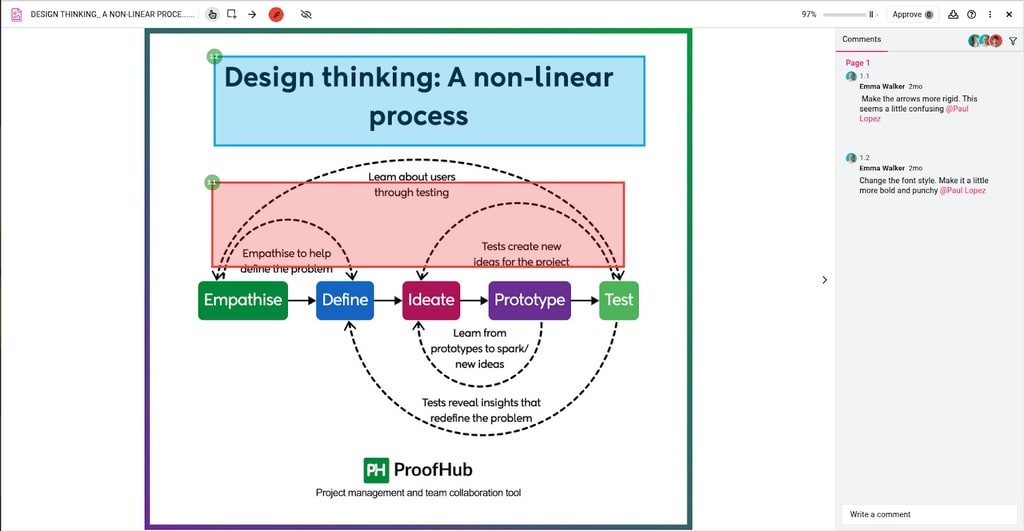
4. Identify and address communication gaps
Miscommunication and lack of information are two of the most common bottlenecks in project management. If a team does not clearly communicate, or there are delays in replying to inquiries, this can slow things down and confuse the team. When information is not shared correctly, it will lead to miscommunication, repetition of work, and missed deadlines.
How to identify:
- Check if teams wait for a lot of information before they can proceed.
- Track if misunderstandings or miscommunications lead to rework.
As per Gallup, Teams displaying a strong sense of engagement generate an additional 18% in sales. Keeping clear, transparent, and timely communication will keep the project on track and prevent bottlenecks from arising. It reduces the chances of misunderstanding and delays, ensuring that all team members are aligned on expectations, deadlines, and responsibilities.
Solutions:
- Utilize centralized project management collaboration software for transparent communication.
- Have a daily or weekly stand-up that involves the alignment of teams.
- Apply the WIIFM (What’s In It For Me) concept to give your team members a clear understanding of their role and significance in different conflicts.
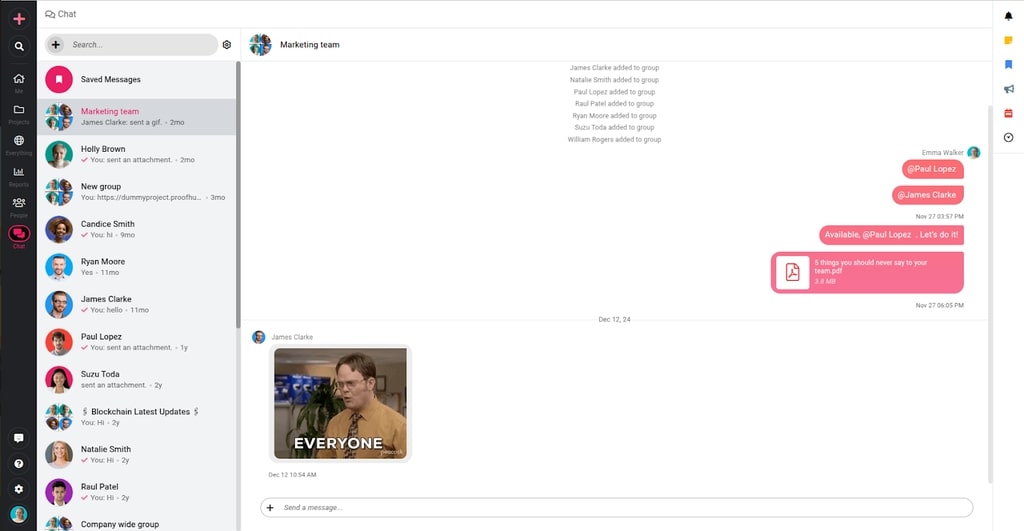
5. Reduce dependency on manual and repetitive tasks
Manual processes often slow productivity, increase the potential for errors, and generate unnecessary workloads that could have been used for other purposes. You can free up valuable resources by automating repetitive, time-consuming tasks so your team can focus on higher-value work.
How to identify:
- Monitor if team members spend excessive time on repetitive administrative tasks.
- Identify processes that require manual data entry, status updates, or approvals.
Automation decreases bottlenecks caused by the handling of manual tasks and makes results more consistent and reliable during the project lifecycle.
Solutions:
- Use AI-powered tools for data entry, reporting, and scheduling.
- Automate the task assignment to simplify the workflow.
- Eliminate dependency on manual approvals through automation.
Conclusion
The often-found areas of bottlenecks in project management are inefficient workflows, communication gaps, and lack of real-time visibility into project progress. If not appropriately managed, it considerably negatively affects project results; it might shift the deadline. You can identify project management bottlenecks by streamlining workflows, improving collaboration, and integrating regular review sessions.
Project management tools like ProofHub can also be implemented. It provides a centralized solution for project management and team collaboration that assists teams in pinpointing and removing bottlenecks. With views like Kanban boards, Gantt charts, calendars, and table views, teams can clearly define workflows, allocate tasks, prioritize, and visualize progress. This ensures that team members always know the next task, thereby preventing roadblocks and bottlenecks.
Additionally, centralized collaboration solves the problem of bottlenecks caused due to gaps in communication between team members and stakeholders. ProofHub brings instant communication via discussions, chat, and @mentions that help eliminate potential delays and allow real-time collaboration for better approvals and feedback.
Frequently asked questions
What is the most common bottleneck in project management?
The most common bottlenecks are consistently missing deadlines and resource allocation. This is because most managers fail to manage their projects effectively. To remove this bottleneck you should use a tool like ProofHub that offers all-in-project management and team collaboration effectively. It will help you create a workflow that works best for your needs so you can allocate resources more confidently and offer a centralized communication place for effective communication.
What is the role of project managers in preventing bottlenecks?
They have a major role in avoiding or finding solutions for bottlenecks. First, they have to design a workflow that minimizes the chances of bottlenecks. This involves clearly defining processes, establishing realistic timelines, and assigning tasks according to the person’s ability.
If bottlenecks do appear, project managers must have a plan in place to address them quickly and effectively. This includes changing workflow, better resources, regular management, and using best-in-class project management and team collaboration software.
How are bottlenecks different from risks?
A “bottleneck” refers to a specific point in a workflow where work is significantly slowed down due to reasons like poor communication, using outdated project management software, ignoring individual team member skills, etc. At the same time, a “risk” is a potential negative outcome that may come or rise due to uncertainties or unforeseen events that could impact the project’s success. Essentially, a bottleneck is a known point of potential delay within a system, while a risk is a broader possibility of something negative happening.
How do you manage bottlenecks in project management?
You need project management and team collaboration software like ProofHub to manage a bottleneck. It will help you to better resource allocation, adjust timelines, streamline processes, or even centralize communication. Moreover, by utilizing it, you can ensure effective communication with stakeholders is essential to keep everyone informed about the situation and the steps being taken to address it.
